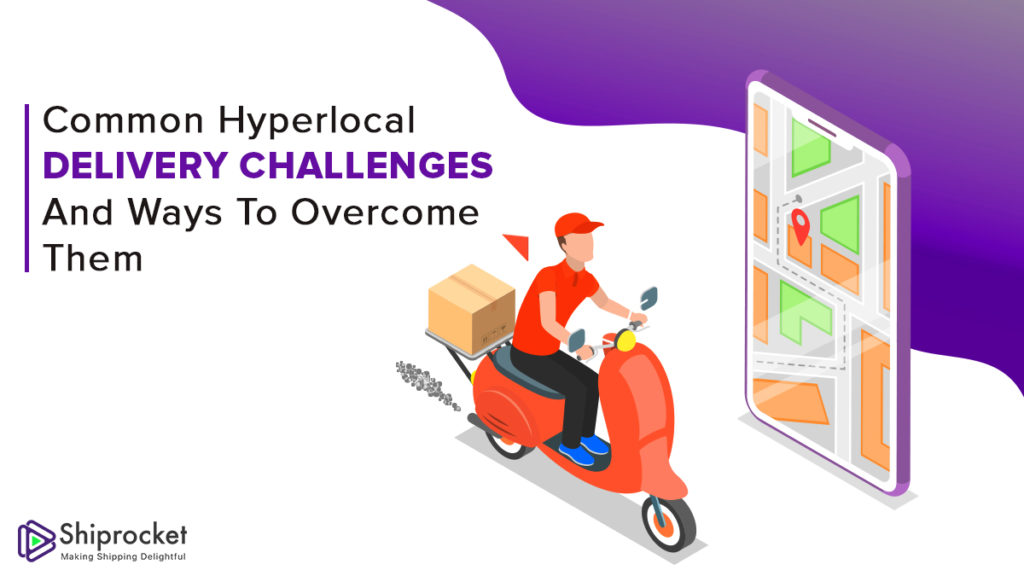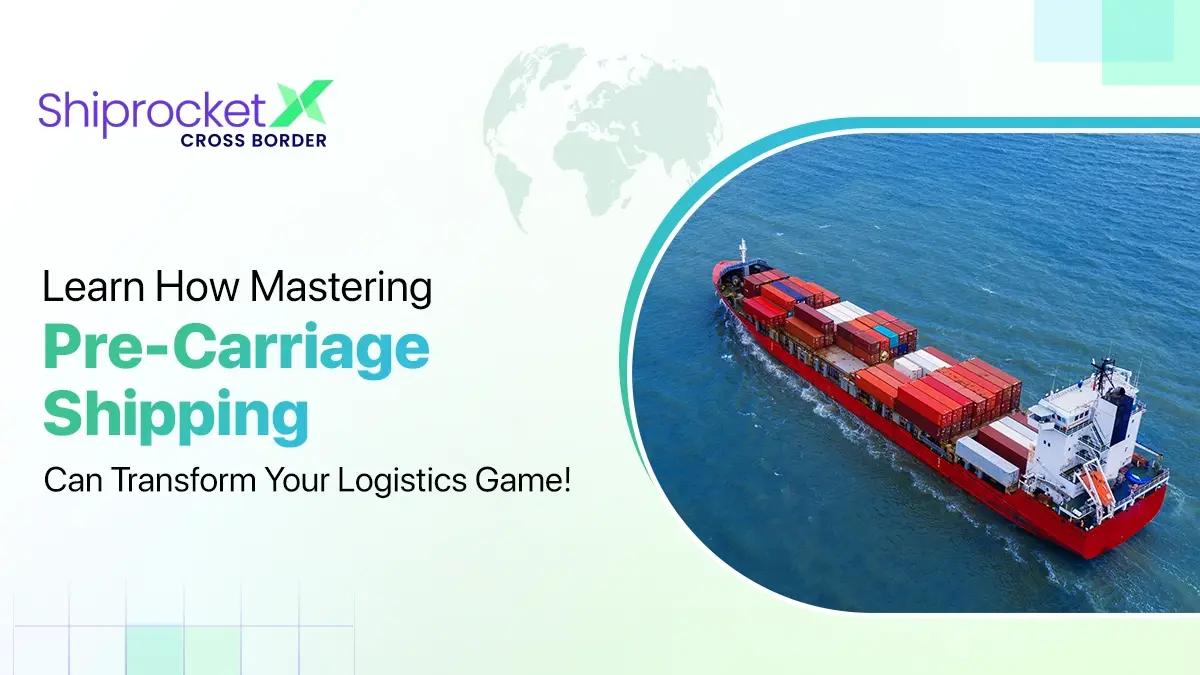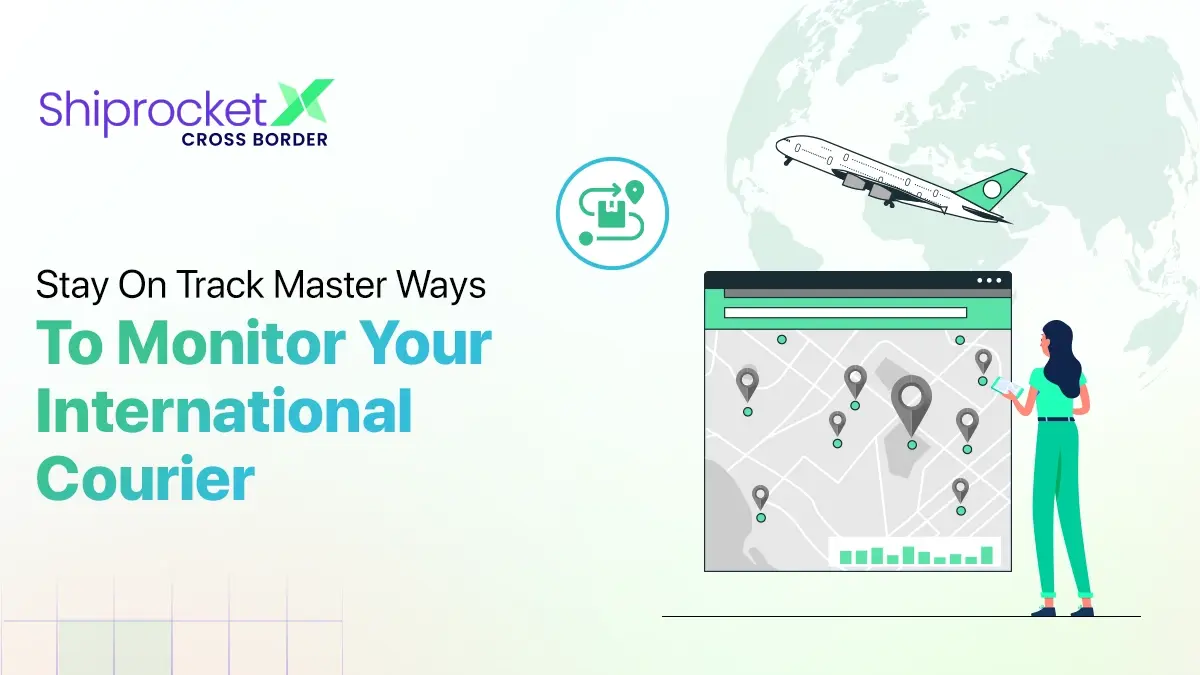7 Hyperlocal Delivery Challenges & Practical Solutions to Overcome Them
The hyperlocal delivery market is growing at an exponential rate in India. About 48% of all eCommerce consumers in India are hyperlocal shoppers. According to a report by Tracxn, we have seen an 80% growth in the number of startups that have emerged for hyperlocal delivery since 2014.
The hyperlocal market in India is mostly unstructured. Therefore, it is not an easy task to formulate a streamlined supply chain process for the delivery of goods. Since there are many micro markets among these hyperlocal ventures, it is necessary to provide them with a marketplace or individual delivery services.
The hyperlocal delivery market is set to grow at a 14.4% CAGR in the coming years, reaching US $5188.6 billion by 2030. Various hyperlocal marketplaces like Grofers Blinkit and Zomato markets, have taken shape in the last few years. Multiple hyperlocal vendors have also set up their online websites to expand their business and reach more customers
For example, ever since we have gone on a lockdown, various essential goods are being delivered with hyperlocal delivery. This is testimony that the market is enormous and upcoming.

But with every opportunity, there are some challenges that come across. Since the market is large and unstructured, the problems accompanying it are also vast. Let’s have a look at these challenges faced by sellers who run hyperlocal businesses and try for delivery.
Increasing Competition
The hyperlocal eCommerce market has always been a competitive one. With time, hyperlocal delivery is no longer just an additional benefit. There is immense competition in the hyperlocal delivery business with players like Shadowfax local, Dunzo, Grab, etc. coming into the picture. Since most sellers are opting for the services, you must have a good reach and a service that gives you access to all these delivery partners. You can get that with Shiprocket hyperlocal services.
Fleet Management
Hyperlocal sellers selling products like groceries, medicines, stationery items, raw meat, etc., usually hire their fleet. This can be challenging as the resources spent on managing this workforce can be a lot. Also, since the orders are not scheduled at fixed intervals, managing a large fleet can be cumbersome.
Irregular Operations
Hyperlocal deliveries are extremely scattered. Even though the customers may be loyal, their orders are not always regular. There are many times in the year that these orders see a spike. For example, on occasions like Diwali, when guests are pouring in regularly, the frequency of orders may increase. Otherwise, the order frequency is rather low. Therefore such irregularity in operations is a significant challenge for hyperlocal deliveries.
Additional Fees by Hyperlocal Marketplaces
Hyperlocal marketplaces have been the talk of the town for a few years now. They have grown to be customer’s favorites as they sort out their delivery needs conveniently. But, for sellers, they are not such a treat. Even though they provide the required visibility to these stores, sellers have to shell out additional costs for getting their products listed on these marketplaces. This can be quite a challenge for somebody who is just starting with the hyperlocal market and does not have the margins to do so.
Fight for Exclusivity
On these online hyperlocal marketplaces, brands have identified a few of their exclusive stores. The stores are usually the ones that can afford to pay extra for visibility and reach. In this fight for exclusivity, smaller stores typically don’t make the cut. Also, marketplaces have started manufacturing their products. This poses a threat to the already available shops and sellers. Hence, selling on marketplaces is also not as easy as it may look.
Additional Marketing Costs
Providing hyperlocal delivery is one aspect of the business, but making your customers aware of it is a different ball game altogether. Hyperlocal delivery sellers do not have a huge profit margin on their sales. Therefore, investing in elaborate offline marketing can be a challenge. It is easy to inform regular customers about the service, but acquiring new customers is difficult. For sellers who had their online shop set up along with their brick and mortar store, can run campaigns on social media. But targeting a small area specific audience can be a challenge.
Difficulty in Expansion
Since these shops operate at the micro-level, it is challenging to expand delivery services until very far. You can target buyers only till a particular geographical area after your market saturates. Therefore, growing your business leaves you with only a few options, like opening branches in different regions.
One-Stop Solution – Shiprocket Hyperlocal Service
Running a hyperlocal business comes with its fair share of challenges, but Shiprocket Quick is here to make things easier. Whether you’re struggling with competition, managing deliveries, or expanding your reach, Shiprocket Quick offers simple, practical solutions that can help your business thrive.
Beating the Competition
The hyperlocal market is tough, with big players like Shadowfax Local and Dunzo dominating the space. With Shiprocket Quick, you get access to all the top delivery partners from one easy-to-use platform. This implies you can reach your customers faster and stay steps ahead of the competition without breaking a sweat.
No More Fleet Management Headaches
Managing your own fleet of delivery personnel can be a hassle—hiring, scheduling, and managing a team takes time and money. With Shiprocket Quick, you don’t have to worry about that. We connect you with trusted delivery partners, such as Shadowfax local, Ola, Uber, Dunzo, Borzo, etc. so you can focus on growing your business while they handle the logistics.
Handling Irregular Orders with Ease
Hyperlocal deliveries can be unpredictable—some days, you’re slammed with orders and other times, it’s quiet. Shiprocket Quick helps you handle these ups and downs by offering flexible, on-demand delivery services. Whether it’s a festival season or a slow day, you can count on us to scale with your needs.
Say Goodbye to Marketplace Fees
Listing your products on hyperlocal marketplaces often comes with additional fees that could eat into your profits. But with Shiprocket Quick, you don’t need to rely on these platforms. You can directly connect with delivery partners and avoid those extra costs, keeping more of your hard-earned money.
Levelling the Playing Field
It’s easy for small businesses to feel overshadowed by bigger stores that pay for exclusivity on delivery platforms. Shiprocket Quick helps level the playing field by offering fast, reliable delivery options. Now, you can easily compete with the big players without getting lost in the crowd.
Cut Down on Marketing Costs
Spreading the word about your hyperlocal delivery services can be expensive, especially when you’re working with slim margins. With Shiprocket Quick, you can focus on providing great service instead of spending big on marketing. Our reliable, efficient delivery helps build customer loyalty, so word-of-mouth will do a lot of the heavy lifting for you.
Expanding Made Easy
As your business grows, expanding beyond your current delivery area can feel overwhelming. But with Shiprocket Quick, you can reach more customers without needing to open new branches. Our wide delivery coverage means you can grow your business without stretching your resources too thin.
Conclusion
The hyperlocal delivery market in India is growing fast, and it brings along many overwhelming challenges, including tough competition, managing deliveries, and dealing with marketing costs.
Shiprocket Quick is designed to help you tackle the biggest challenges of running a hyperlocal business. From managing deliveries to cutting costs, it’s your go-to solution for staying competitive and growing your business.
Hyperlocal delivery challenges and practical solutions to overcome them are much more manageable when you have Shiprocket Quick by your side. It’s everything you need to simplify your operations and take your business to the next level!






Hi , I’m starting up my new clothing app next month. I’m looking for hyper local delivery. Can my app be integrated with the delivery partners .
Good News for small businesses. I appreciate your effort and solution made to local businesses.
I will definitely suggest my friends to opt for your services.